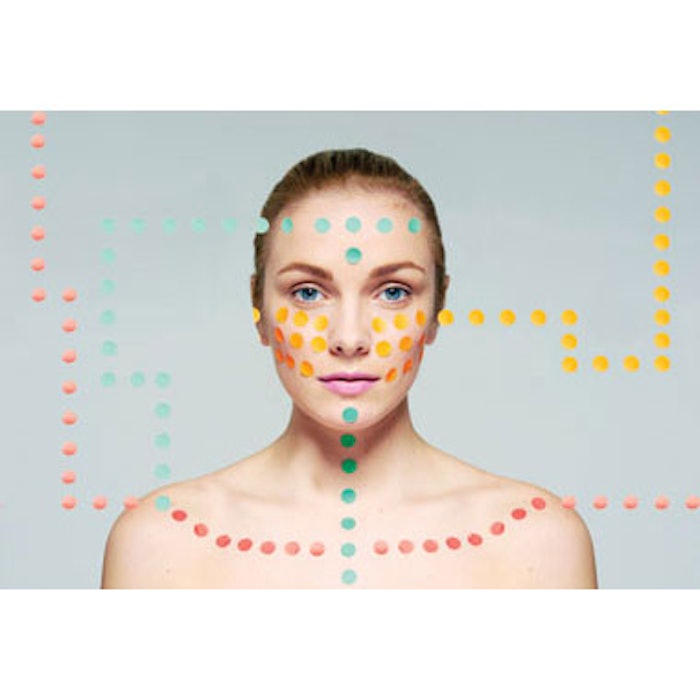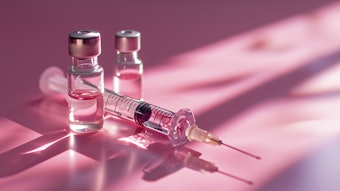
Fractional laser devices, which pixelate the laser beam, dividing it into thousands of microscopic treatment zones to target a fraction of the skin at a time, have become key tools for dermatologists and plastic surgeons. Reliant Technologies introduced the first commercial fractional laser in 2004 under the brand Fraxel. The original 1550nm nonablative Fraxel device led to a proliferation of platforms, including several fractional ablative systems.
While the introduction of ablative fractional technologies that offer comparable benefits to traditional—or full-field—laser resurfacing have generated a lot of excitement, physicians are finding that nonablative devices continue to offer unique benefits to patients seeking rejuvenation, a reduction in acne scarring and relief from stubborn pigmentation problems.
Jill Waibel, MD, a Miami-based dermatologist, notes that nonablative fractional devices have become widely accepted as effective for reversing signs of photodamage, acne scarring and pigment irregularities. Among the benefits of nonablative vs. ablative technologies is the ability to treat darker skin types and off-the-face areas, including the hands, chest and neck. “Nonablative fractional resurfacing has become a popular worldwide procedure due to its effective epidermal and dermal rejuvenation, increased safety profile, decreased postoperative downtime, use on all anatomical areas, and wide spectrum of medical and aesthetic indications,” she says. “It can be used for mild to moderate rhytids, leukoderma, atrophic and hypertrophic scars.”
Today, nonablative devices include a range of wavelengths, including Solta Medical’s original 1550nm Fraxel, combined 1550nm and 1927nm Fraxel Dual, and 1440nm Clear + Brilliant; radiofrequency (RF)-based devices, such as Syneron’s eMatrix and Eclipse Aesthetics Skinfinity; and Sciton’s Halo Hybrid, which includes both the nonablative 1470nm wavelength and ablative Er:YAG energy.
Nonablative Advantages
Two indications for which nonablative devices are considered primary treatment options include acne scars and facial rejuvenation in skin types IV-VI. “For conditions such as acne scarring, a series of nonablative treatments may be slightly superior to ablative resurfacing,” says New York City-based dermatologist Anne Chapas, MD. “This is because the nonablative treatment places a lot of heat in the dermis, which induces collagen and scar remodeling. Additionally, nonablative resurfacing is preferable in darker skin patients because it has a decreased risk of post-inflammatory hyperpigmentation.”
Acne scar treatments are typically performed at a high millijoule setting to reach the scar tissue, according to Dr. Chapas. “Depending on the skin color and area being treated, the density or treatment level should be adjusted to limit bulk heating and decrease the risk of PIH,” she says. “Typically, three to six sessions are recommended and conservative estimates of 30% to 50% improvement can reliably be achieved.”
When treating patients with acne scars, Dr. Chapas and Philadelphia-based dermatologist Eric Bernstein, MD, turn to the Fraxel Dual. “I love the Fraxel Dual for acne scarring, using mostly the 1550nm wavelength. Its efficacy and safety cannot be matched for that indication,” says Dr. Bernstein.
Image copyright Getty Images
[pagebreak]
Oculoplastic surgeon Brian Biesman, MD, in Nashville, Tennessee, is a proponent of using nonablative technologies for acne scars and skin rejuvenation for younger patients. “To treat patients with relatively modest dermal and epidermal changes, I love eMatrix,” he says. “I use it on the face, chest and hands. I use it for younger patients who have dyschromia, fine lines and wrinkles. It is ideal for the patient who doesn’t need ablative fractional resurfacing—which would be overkill—but needs more than IPL can provide for skin texture. I like to do three sessions, and sometimes less.”
A study comparing full-field laser resurfacing, fractional ablative and fractional nonablative resurfacing for skin rejuvenation, published in Clinical Dermatology (November 2013), concluded that, “Nonablative resurfacing is ideal for patients under 50 years with minimal facial sagging and for those unwilling to undergo expensive and demanding ablative procedures.”
A relatively new entry to the nonablative device category is the Clear + Brilliant from Solta Medical/Valeant. A wide range of providers can operate the lower-powered fractional laser to rejuvenate skin and improve the penetration of topicals. “The Clear + Brilliant has replaced microdermabrasion in my office and is a fantastic adjunct to topical agents,” says Dr. Bernstein.
Dr. Chapas uses the device for “melasma, early photodamage and enlarged pores,” she says. “The treatment protocol is six treatments every two to four weeks. These can be combined—or alternated—with treatments, such as microdermabrasion, peels and other laser treatments for enhanced results.”
Treating Skin of Color
Patients with darker skin types often present a challenge to laser practitioners, due to the increased risk of PIH. Although nonablative treatments are safer for this group, they are not without risk. Amy Taub, MD, of Lincolnshire, Illinois, recommends lowering the treatment density on skin of color, even when using RF- and infrared-based nonablative devices, typically touted as safe for all skin tones. “Sublative RF (eMatrix) is very good to use in darker skin types as long as normal densities are utilized,” she says.
A restrospective chart review performed by Andrew F. Alexis, MD, et al, and published in the Journal of Drugs in Dermatology (April 2013) found that the nonablative 1550nm fractional laser was well tolerated by patients with skin types IV to VI and showed a low risk of PIH when combined with 4% hydroquinone used pre- and post-treatment.
Dr. Bernstein performs test treatments on darker skin types and feels that newer technologies may allow practitioners to perform more aggressive treatments for darker skin patients struggling with acne scars. “Some of the newer devices, such as the picosecond lasers that are being used for tattoo removal, may have efficacy for treating darker skin types with acne scarring,” he says.
Roy G. Geronemus, MD, director of Laser & Skin Surgery of New York, agrees. “I prefer to use the PicoSure for darker skin phototypes as this has the highest safety profile for this group of patients,” he says.
Image copyright Getty Images
[pagebreak]
How patients are treated and how frequently are also critical factors. “Given the increased risk of post-inflammatory hyperpigmentation in darker skin types, I generally treat at less aggressive settings to avoid excessive inflammation in the epidermis,” says Dr. Chapas. “I space my treatments at greater time intervals to ensure that the skin is fully recovered, and I recommend that the patients follow a strict sun protection regimen post-treatment.”
Choosing the Right Treatment
The selection of ablative vs. nonablative treatment is based on the clinical needs of the patient. Nonablative procedures are ideal for younger patients who wish to improve overall skin quality, tone and texture. This modality is ideally suited for treating the early signs of photoaging rather than addressing advanced damage and deep wrinkles.
“First you need to consider the severity of photodamage or thickness of the scar present,” says Dr. Waibel. “But the treatment modality may also be determined by the patient’s lifestyle and the amount of postoperative downtime the patient will accept.” Since nonablative treatments typically require multiple sessions, she also recommends customizing the procedure at subsequent sessions based on interval improvements from previous sessions.
Dr. Chapas also emphasizes the importance of understanding patients’ lifestyles when choosing an appropriate treatment. “Physicians should really decide on a system based on their patient needs,” she says. “For example, in the Northeast, ablative resurfacing is not very popular since patients cannot afford time off from work or social activities; therefore, they prefer to do multiple lighter treatments with less recovery.”
Edward Farrior, MD, FACS, past president of the American Academy of Facial Plastic and Reconstructive Surgery (AAFPRS), uses the Lumenis UltraPulse CO2 fractional laser—which can be used in a nonablative or ablative mode—and the Cynosure-Palomar ICON 1540 nonablative laser. “There is no right device; each has pros and cons that dictate which patient they would be best suited for,” he says. “The Palomar ICON 1540 is a less aggressive treatment that can be done with topical anesthesia. It has virtually no downtime but must be repeated at least five times at intervals of up to three weeks to achieve a visible improvement. The recommended treatment for the individual patient depends on the expectation for degree of improvement and willingness to commit to the treatment.”
Evaluating the Devices
With so many new technologies on the market, it is wise to reach out to other practices before selecting a system. “Talk to colleagues who have the system you are interested in and use it,” says Jason Bloom, MD, a facial plastic surgeon in Philadelphia. “Most companies will offer to bring the system in to let you test it out or try it on yourself or your office staff.”
To decide which systems to investigate, start by looking at your patient base, including their ages, ethnicities and primary concerns. Matching the proper laser to the patient can be crucial in avoiding adverse events, such as pigmentary changes and scarring.
“It’s also important to buy devices from companies that can provide timely service,” says Dr. Chapas. “These devices are fairly stable, but if they malfunction, it can be extremely costly to the practice.”
Image copyright Getty Images
[pagebreak]
Best Practices
Providing staff with written, detailed pre- and postprocedure protocols is essential to achieving successful outcomes and an optimal patient experience. Practitioners who manage expectations from the time of the consultation through post-care will see the most satisfied patients.
“With nonablative therapies, there is no removal of the epidermis, and they require repeated treatments with delayed clinical outcomes,” says Dr. Farrior. “This often makes it difficult for patients to appreciate significant clinical improvement and necessitates excellent clinical photography to confirm improvement. There is a degree of delayed gratification with nonablative techniques that must be emphasized during the informed consent process.”
Though nonablative devices offer a much lower risk of adverse events than ablative lasers, they are not risk-free. “With nonablative resurfacing, expect to have acne flares, edema and sometimes erythema that is prolonged,” says Dr. Taub.
Dr. Waibel suggests using non-occlusive postoperative care moisturizers and “a short course of oral acne antibiotic” to reduce acne flares. “When treating facial areas, viral prophylaxis should be considered for both nonablative and ablative fractional resurfacing,” she adds. “I especially recommend prophylaxis to patients with a history of herpes simplex virus.”
Dr. Waibel also insists on a post-treatment regimen of sun-avoidance and protection. “With nonablative treatments, bland emollients and sunblock may be initiated immediately since the epithelium essentially remains intact,” she says.
“Both ablative and nonablative fractional devices can cause hyper- and hypopigmentation, infections and scarring,” says Dr. Chapas. “Physicians should be well trained in all aspects of laser tissue interactions and wound healing before treating with these devices. A laser is a surgical tool, like a scalpel, and is only as good as the person who is using it.”
Resources
The following companies offer a range of ablative, nonablative and combination fractional devices for aesthetic practices.
Cynosure, 800.886.2966, www.cynosure.com
Eclipse Aesthetics, 800.759.6876, www.eclipseaesthetics.com
Lumenis, 408.764.3000, www.aesthetic.lumenis.com
Sciton, 888.646.6999, www.sciton.com
Solta Medical/Valeant, 877.782.2286, www.solta.com
Syneron-Candela, 800.733.8550, www.syneron.com
Wendy Lewis is president of Wendy Lewis & Co Ltd, Global Aesthetics Consultancy, author of 11 books, and a contributor to numerous journals and publications in the U.S. and Europe. Contact her at www.wendylewisco.com.











